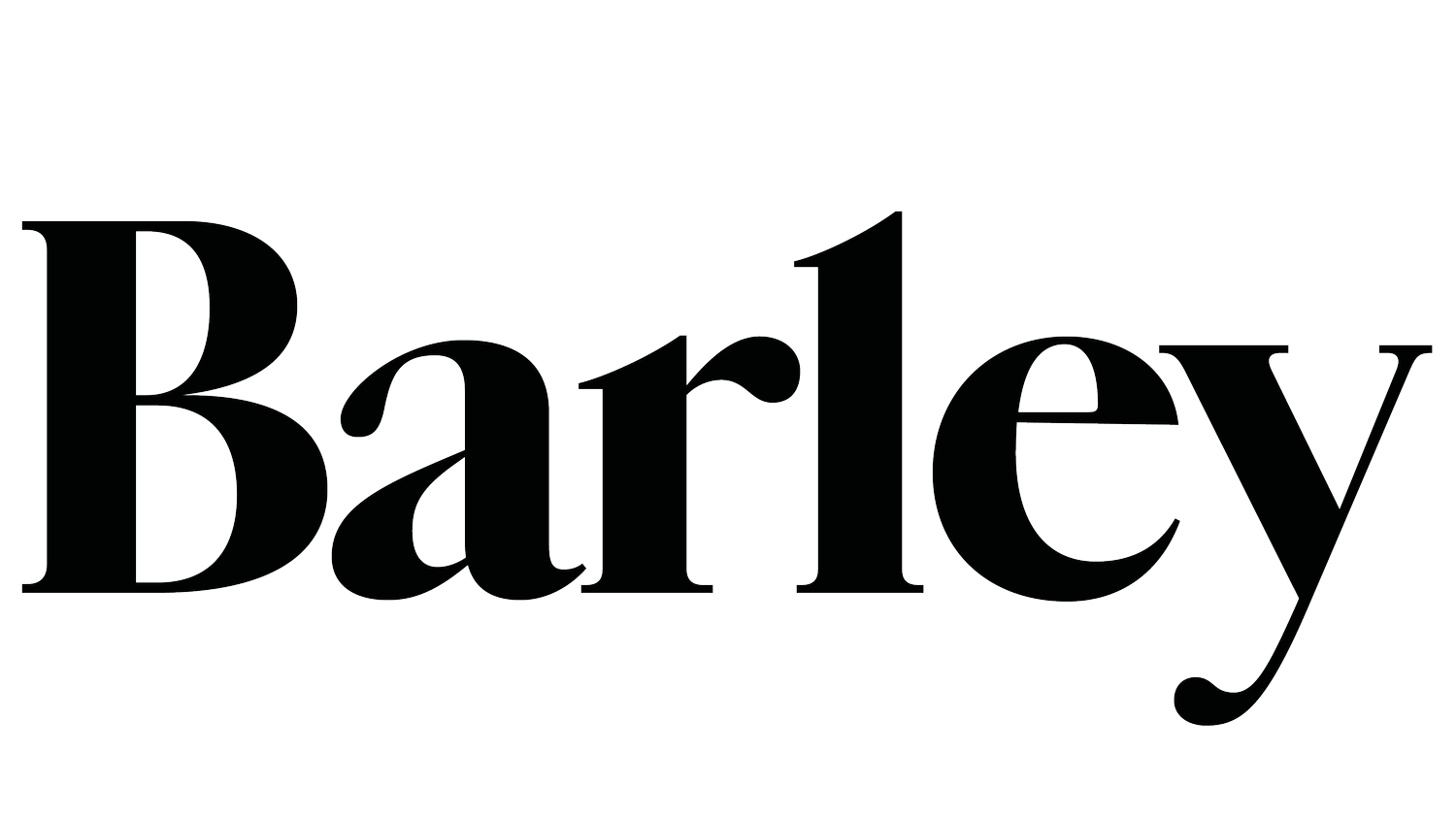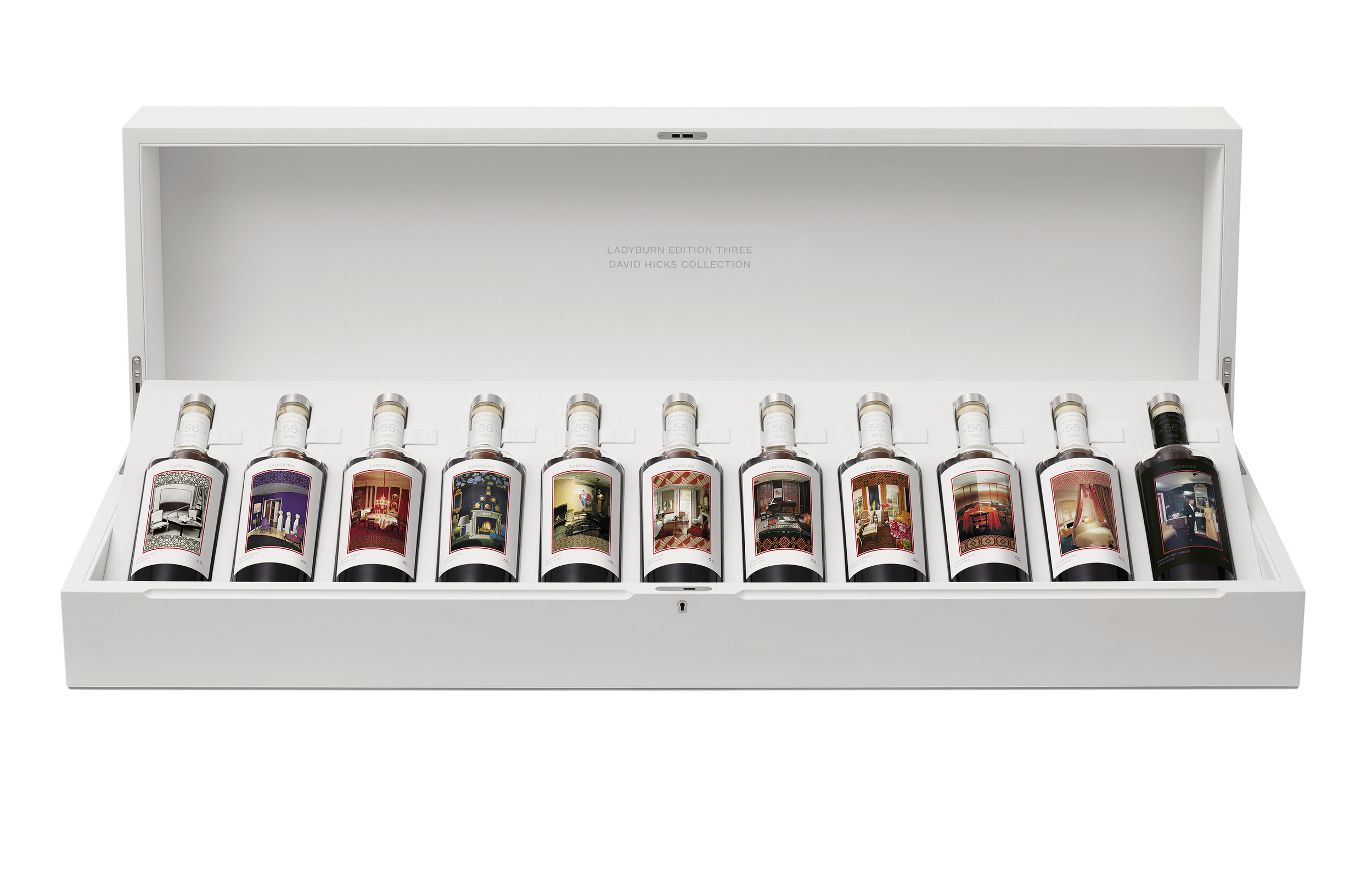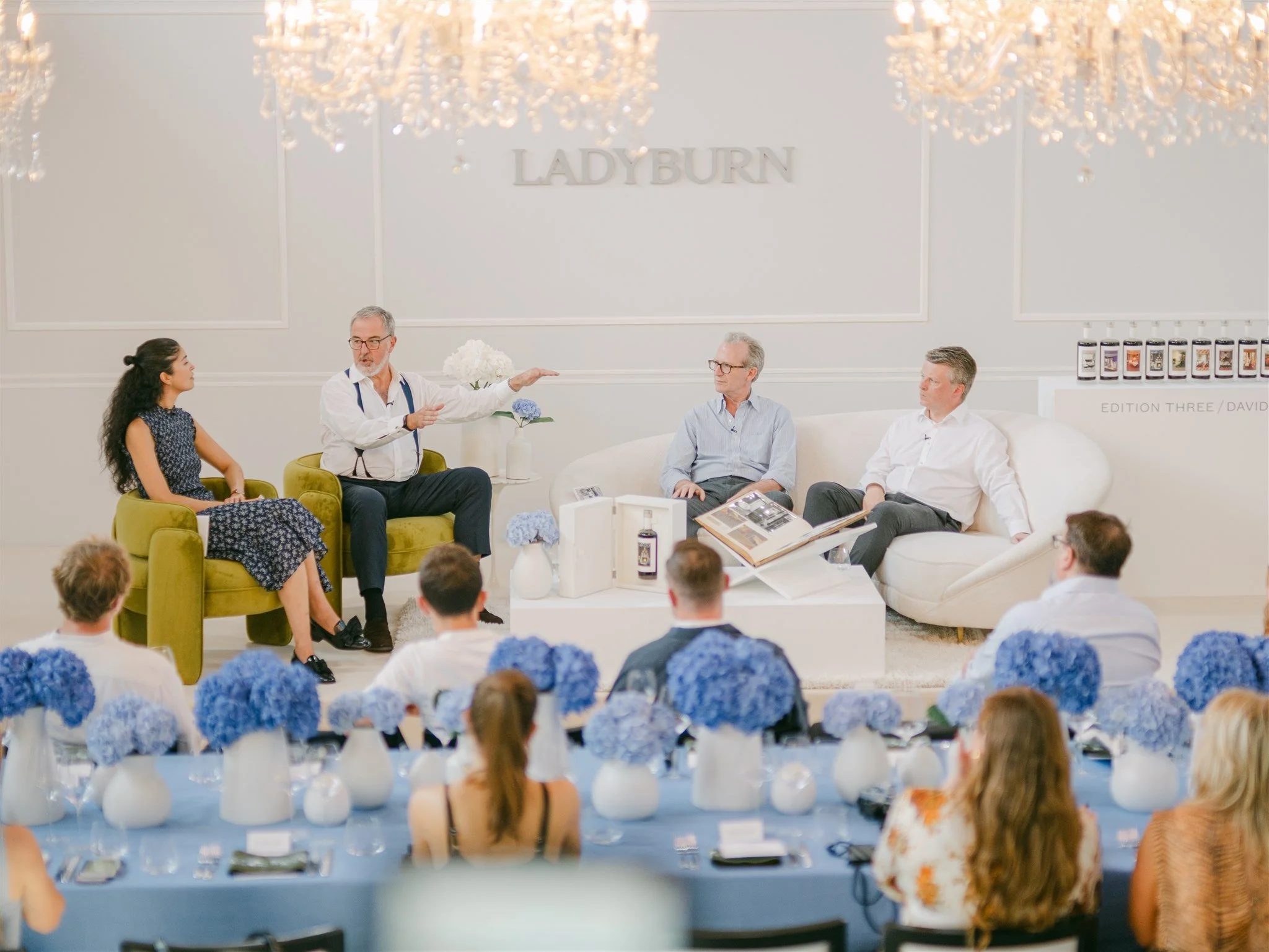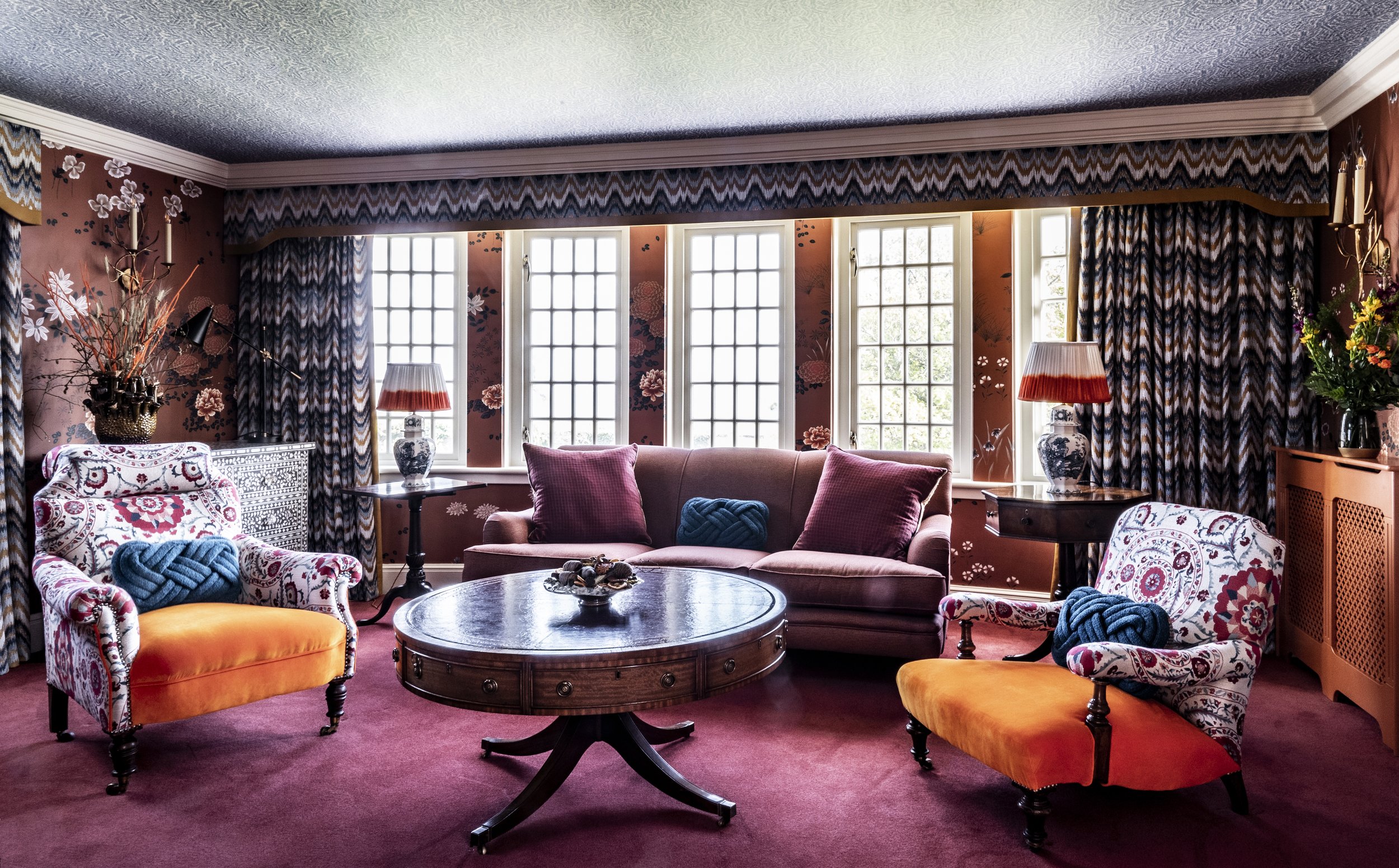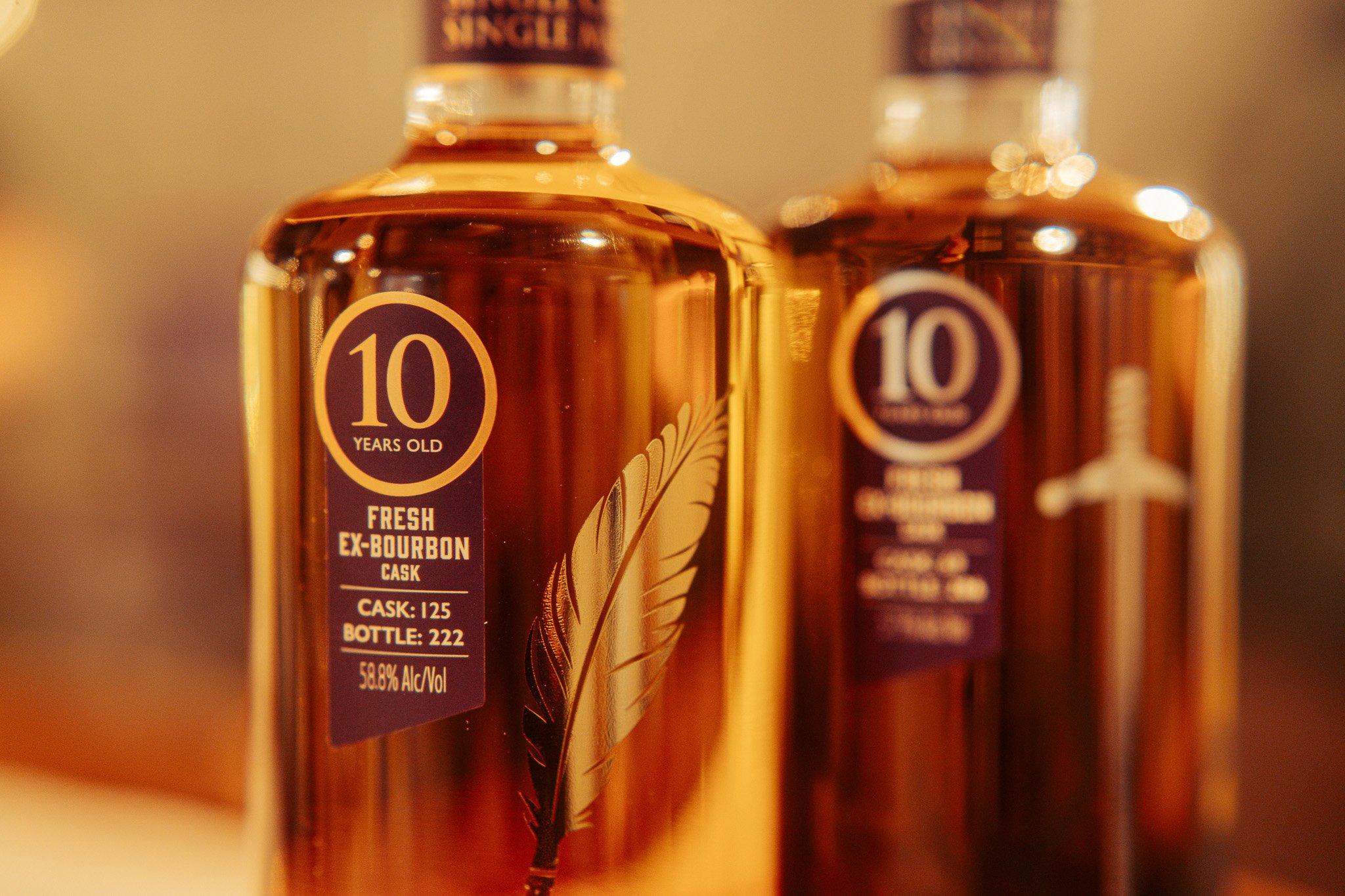The fine art of bottling: Ladyburn’s latest Sixties-inspired edition is a collectors dream
With exclusive artwork from the ’60s hippest interior designer David Hicks, the latest bottling of Ladyburn’s 1966 Edition is a seriously swinging affair — Tom Pattinson falls head over heels at an exclusive launch
Perhaps it was simply eagerness mixed with excitement and thirsty anticipation, but I was early. More than just uncharacteristically punctual in fact. So when I arrived at the soon-to-be-opened Ladbroke Hall in West London on a warm autumn afternoon, I found it was still putting on its make up. Workmen on tall step ladders were hanging light fittings, people with brooms were sweeping away dust and I was grateful to be ushered outside for a cool glass of Gusbourne sparkling wine.
This monumental building, constructed at the very start of the 20th-century to house a car showroom and assembly plant, has been reimagined by Loïc Le Gaillard and Julien Lombrail as “a meeting place for innovation” – a creative centre in the heart of Notting Hill. It’s the perfect location for an exclusive sneak peek at the release of the third and final run of Ladyburn’s 1966 Edition.
Ladbroke Hall, a creative centre in the heart of Notting Hill
I walk down gleaming steps, under the glittering monochrome chandelier by Spanish artist and designer Nacho Carbonell, past the large-scale artworks commissioned by British painter Sir Christopher Le Brun, and into the belly of the Hall. A lone table stands in the centre of the bright white room, light blue Hydrangeas adding a smudge of colour to the scene, where Italian chef Emanuele Pollini will present exquisite dishes: barbecued rack of lamb, eggplant gratin, bouchon de chevre, to pair with this exceptionally rare dram. The white of the room matches perfectly with the long bone boxes that hold the 11 bottles of Ladyburn 1966 Edition One, Edition Two, and now, Edition Three – to complete the tryptch.
On stage, from left to right, Caroline Issa, Jonathan Driver, Ashley Hicks and Brian Kinsman
The simple elegance of the room ensures that all attention is focused on the bottles – where quite rightly it should be. Because each of these editions is so rare, so unique and so perfectly put together nothing should distract us from enjoying this work of art. And works of art they are. Each edition is limited to 210 bottles, released in 10 collections of 11 bottles each, including a ‘Black Swan’ bottle reserved for those who purchase the complete set. And the cost? Well, dear reader, this special collection commands a reassuringly elevated price-tag of £221,000.
The editions are from1966 and so every bottle from each of the three editions features works by an artist at the height of their fame during that era. For Ladyburn 1966 Edition One the images were created by photographer David Bailey of his native East London. Edition two celebrated works from fashion photographer Norman Parkinson’s archive, and the third and final release in the Ladyburn 1966 Edition series showcases interior designer David Hicks’s work.
‘Each of these editions is so rare, so unique and so perfectly put together nothing should distract us from enjoying this work of art’
Today we are here with Ashley Hicks, David’s son, who talks about how he chose each of the 11 images of Hicks’s iconic interiors. He explains how he compiled his father’s scrapbooks to create an archive that documents his role in shaping the most culturally transformative era of the century: the swinging sixties. An era where the modern celebrity was born. Where rock music blasted from newly formed underground clubs. Hair grew longer, skirts were as short as sawn-off shotguns and working-class artists, musicians and models dominated the pages of newly launched glossy magazines.
Whilst the working classes experimented with fashion, drugs and sex, the upper classes dabbled in fabrics, wallpapers and carpets. Hicks was at the epicentre of 1960s interior design, drawing on bold colours, wacky fabrics and contemporary art, and today the name David Hicks is synonymous with a fantastically retro aesthetic.
Coming from an aristocratic family (his father-in-law was Earl Mountbatten) Hicks’s client list was a who’s who of the era’s elite. From Vidal Sassoon to Helena Rubinstein to Mrs Conde Nast – he even designed the young Prince of Wales’s first apartment at Buckingham Palace. Hicks was also the mastermind behind the hotel carpet in Stanley Kubirck’s The Shining and was a darling of the film and fashion industries.
At the same time and the same year, 1966, as Hicks was redefining interior design in restaurants, hotel rooms and the lounges of the rich and famous, a small distillery called Ladyburn opened its doors for the first time in Girvan, Ayrshire. This new facility by William Grants & Sons was a marvel of industrial design – changing the future of Scotch Whisky with new developments in production and maturation methods. Sadly, it wasn’t destined to survive. Economic downturn led to Ladyburn being shuttered just nine years later in 1975, and it was stripped for parts, with its two pairs of stills shipped out to two major distilleries in the Grants family portfolio, The Balvenie and Glenfiddich.
From left to right, Brian Kinsman, Ashley Hicks, Caroline Issa and Jonathan Driver
“The Ladyburn distillery is widely regarded as being ahead of its time both in terms of design and technology”, says Jonathan Driver, Managing Director of William Grant & Sons’ Private Clients Division. “The launch of these elusive whiskies marks a fascinating moment in the history of Scotch whisky and provides collectors access to a Ghost Distillery, with a rich and storied past. The Ladyburn foundation triptych celebrated a trailblazing distillery and the avant garde nature of some of Britain’s creative legends, both as relevant and inspiring today as they were in the sixties.”
Much of Hicks’s interior work in hotels and private homes has been lost to decades of refurbishments and redesigns; only his archive of images and scrap books are left to enjoy. Hicks’s meticulous record keeping and strict orders to his children to protect these archives at all costs has, however, enabled his legacy to live on.
‘Walls can be repainted and barrels can be refilled, but neither Hicks’s work nor Ladyburn whisky can ever be reproduced. Captured in this dark liquid are a moment in time – a piece of history’
Very little remains too of the Ladyburn ghost distillery but a few grainy photos. Crucially, however, nearly 200 barrels of well aged and immensely fine whisky did survive, stored alongside the Grant’s family private collection. Walls can be repainted and barrels can be refilled, but neither Hicks’s work nor Ladyburn whisky can ever be reproduced. Captured in this dark liquid are a moment in time – a piece of history.
Brian Kinsman, Malt Master at William Grant & Sons, is the man tasked with selecting the casks used in the Ladyburn 1966 editions. He monitors not just the 200 Ladyburn barrels but over a million casks from across William Grant & Sons entire roster. To keep track of his million bottles he has a highly complex and detailed spreadsheet, but knows “personally” over 5,000 casks, he tells me, which he returns to regularly to check in on, to see when they might be ready for bottling. In September 2022 he decided it was time for the 56-year-old single Sherry butt to become the final piece of the 1966 puzzle.
The White Leather room from David Hick’s collection on Ladyburn 1966 Edition Three
“The cask selected for the third release is an exceptionally unique whisky, reflecting over five and a half decades maturing in a single Sherry butt”, explains Kinsman. Each sip adds new layers of complexity, harmonising intense sweetness and enthralling bitter accents with underlying oak. An unforgettable experience.”
The Ladyburn 1966 Edition triptych is an incredibly rare series made from a distillery that only existed for nine years. But, like the cultural icons it has been paired with, it represents the vanguard of innovation, capturing a moment in time of technological, social and cultural change.
Ladyburn 1966 Edition Three is now available to William Grant & Sons Private Clients across the globe.
